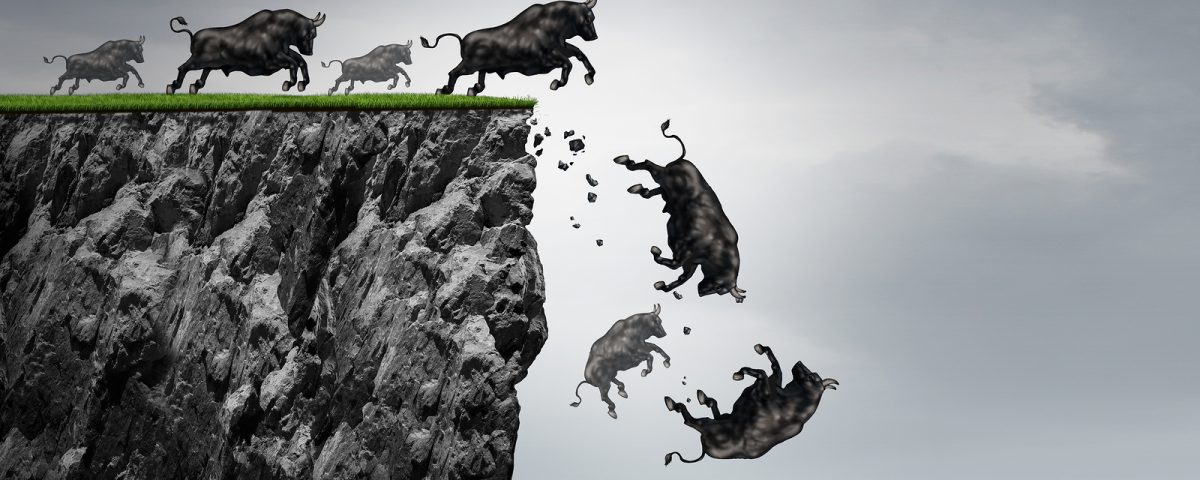Is It Different This Time?

You ever wonder why in every crisis situation, when the financial markets go through a steep selloff, and there’s a sharp increase in volatility that many market pundits decry the usual refrain that this time it’s different?
In my humble opinion the answer is NO. Human behavior, which is what drives the actions of buying or selling will never change. Circumstances will vary – yes, but not human behavior. Some would point to the current pandemic as something that’s different, but we’ve had pandemics before. We’ve had currency wars, a near collapse of the financial system, twice, in the last 100 years, and the list goes on.
In the world of trading and investing you always hear about how the markets are constantly changing, and to some degree that’s true. However there is a certain fundamental truth about trading and investing that doesn’t change: the predictability of human behavior.
When traders talk about changing markets they’re generally referring to the overall direction of the market, or perhaps to the changing levels of volatility. Markets go through bull phases when investors feel optimistic about the prospects for the economy and earnings. And sometimes they buy stocks, simply because they are the perceived best investment vehicle at that particular time. After most investors become fully invested in the market the topping phase begins. This is when buyers become increasingly emotional about missing the boat and begin recklessly buying without regard to price. Unfortunately, these latest buyers will be the first to sell, since prices will fall from the lack of new buyers, and these cycles will repeat again and again.
On the flip side, a decline by any of the major averages (S&P 500, Dow or Nasdaq) of more than 20% from peak to trough is deemed a Bear market by most on Wall Street. This is when investor’s moods have soured and they have lost their enthusiasm for buying. At this point investors become nervous about holding stocks and become net sellers to a small degree. This will continue until that mild nervousness becomes despondency and the selling begins in earnest for these investors. Ironically, the last of sellers finally have to let go of their stocks in order for the bottoming process to begin. Coincidentally, many of the same traders that bought near the highs are the same ones that sell near the bottom.
This phenomenon will never change as long as human beings are dealing with money and risk. That’s because the emotions of fear and greed will always drive people to do the wrong thing in the market. Professionals know this, and use this information to their advantage. What’s fascinating is that these human traits have driven markets since there were markets to trade. Some proof of this comes from books that were written in the early 20th century. One such book is “Reminiscences of a Stock Operator” written in 1923 which is loosely based on the life of the legendary investor Jesse Livermore. In it, you’ll find that things haven’t changed at all in regard to the makeup of a losing trader versus the consistently profitable one. Traders made the same mistakes in 1893 as they do in 2020.
Another constant in the market is that institutions will always dominate market movement. That’s because they have the firepower to create strong moves in the market. These show up on the charts as expanded range candles and are something we look for as an indicator of imbalance in the supply/demand equation. This too will not change and therefore it’s critical as a trader that we learn where these institutions are conducting their buying and selling.
In any conversation pertaining to trading or the markets invariably there is someone who has an idea about where the markets are likely to head and a strong opinion as to why it “should ” do this or that. People always have this notion that the market should react a certain way because of news or events. The news cycle (for those that watch) tends to influence these opinions. This in turn, leads traders to chase the news by buying high after good news and selling low after bad news. This too has been going on since the printing of newspapers and it’s not likely to change anytime soon.
At the end of the day, the more things change, the more they stay the same. Understanding when and why prices turn is a great starting point for success in trading the market because of the immutable law of supply and demand. In addition, recognizing human emotion and how it is displayed on a price chart is just as important. Because, when it comes to human beings and putting money at risk, things will never change.
Until next time, I hope everyone has a great week.
